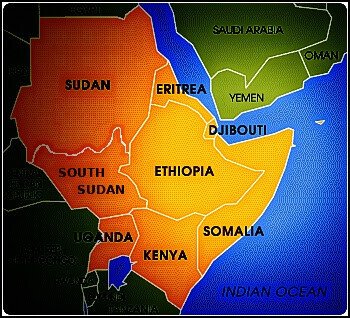Tsegaye Tegenu, PhD
2023-09-14
In part six we have mentioned about 23 strategies for the creation of a post-scarcity economy of Ethiopia. These strategies cannot be directly implemented by themselves. They require a number of policies, namely, standards, principles and rules that have to be adhered to when implementing a strategy.
By definition a policy is a set of rules, guidelines, or principles that govern decision-making and actions within an organization, government, or any structured group. Policies are designed to provide a framework for consistent and responsible behavior, ensure compliance with laws and regulations, and help achieve specific objectives of the strategies.
In our case policies serve as the guardrails and governance structure that support the successful implementation of the strategies. They help ensure that a large number of ministries execute the strategies efficiently, ethically, and in compliance with the established standards, principles, and rules. In this section I will try to identify the policies of the respective strategies.
Often the components and objectives of economic policies are mentioned covering a wide range of areas, including fiscal, monetary, trade, industrial, and regulatory policies. In this study economic policies are categorized under the overarching strategies mentioned in part six. Most of the common policies employed under the strategies are the followings:
I. Strategies and policies for the vision goal of private sector and market economy development
Strategy 1: Market-Oriented Economic Reforms
- Monetary and Fiscal Policy
- Deregulation Policy
- Land Privatization Policy
- Financial Sector Reform Policy
- Trade and Investment Policy
Strategy 2: Investment Promotion and Infrastructure Development
- Infrastructure Investment Policy (transportation, energy, and communication)
- Foreign Direct Investment (FDI) Promotion Policy
- Policy of Establishing Special Economic Zones (SEZs)
- Public-Private Partnerships (PPPs) Policy
Strategy 3: Human Capital Development and Education
- Policy of improving access and quality of education
- Promoting technical and vocational training
- Healthcare Improvement Policy
- Foster partnerships between educational institutions and the private sector to align skills with market demand.
Strategy 4: Entrepreneurship and Small and Medium-sized Enterprise (SME) Support
- Policy of Access to Finance
- Policy of establishing Business Incubators and Innovation Hubs
- Policy of Entrepreneurship Education
Strategy 5: Regulatory and Governance Reforms
- Policy of Implementing Anti-Corruption Measures
- Regulatory Reforms to reduce bureaucratic red tape
- Enhancing Contract Enforcement
- Policy of Intellectual Property Rights (IPR) Protection
Strategy 6: Innovation and Technology Transfer
- Policy of investment in research and development (R&D) infrastructure and programs.
- Policy of incentives for private sector innovation and R&D, and support for technology clusters and innovation ecosystems.
- Policy of collaboration between universities, research institutions, and industry in technology transfer.
- Provide incentives for knowledge diffusion and technology adoption.
Strategy 7: Export Promotion and Economic Diversification
- Policy of establishing agencies to promote export
- Policy of product diversification (new export-oriented industries and products)
- Promoting value-added processing
II. Strategies and policies for the vision goal of economic structural transformation
Strategy 8: Industrialization: promote the growth of manufacturing and industrial sectors.
- Policy of establishing industrial parks and special economic zones to attract investments.
- Policy to provide incentives for local and foreign companies to set up manufacturing facilities.
- Policy of developing vocational training programs to build a skilled workforce for industrial jobs.
- Policy of establishing Special Economic Zones (SEZs)
Strategy 9. Agricultural specialization: Increase agricultural productivity and value-added activities
- Policy of investment in agricultural research and development.
- Policy of land consolidation
- Policy of irrigation
- Policy of specialization in agricultural products
- Policy to provide farmers with access to modern farming techniques, technologies, and equipment and market access.
- Policy to promote value chain development to add value to agricultural products
Strategy 10. Infrastructure Development
- Policy of investing in roads, ports, airports, and railways and telecommunications networks to facilitate the movement of goods and people.
- Policy of investing in a physical infrastructure of irrigation (regulators, canal reaches, and storage facilities) and energy sources
Strategy 11. Enhance access to capital for entrepreneurs and businesses.
- Policy of strengthening the banking and financial sector.
- Policy of promoting microfinance institutions to support small and medium-sized enterprises.
- Policy to facilitate venture capital and private equity investments.
Strategy 12. Education and Skills Development: Invest in human capital development.
- Policy to improve access to quality education at all levels.
- Policy of aligning education and training programs with the needs of the evolving job market.
- Policy to promote lifelong learning and vocational training.
Strategy 13. Technology and Innovation: Foster innovation and technological advancement.
- Policy of supporting research and development initiatives.
- Policy to encourage technology transfer and collaboration with universities and research institutions.
- Policy to protect intellectual property rights.
Strategy 14. Regulatory Reforms: Create a conducive business environment.
- Policy of streamlining business registration and licensing procedures.
- Policy to enhance property rights protection and contract enforcement.
- Policy to reduce bureaucracy and corruption.
- Policy of establishing agencies to facilitate trade and investment and provide support to businesses
III. Strategies and policies for the vision goal of spatial transformation and integration
Strategy 15: Promote regional development by addressing disparities between urban and rural areas
- Policy of investment in infrastructure development in less-developed regions.
- Policy to promote industries suitable for specific regions.
- Policy of rural industrialization
- Policy of supporting agricultural modernization and rural livelihoods.
- Cluster Development Policy: Supporting the growth of industry clusters in specific regions to leverage local strengths and enhance competitiveness
- Policy of Agribusiness Development: Promoting agribusiness and value addition to increase the income potential of agricultural activities in rural areas.
- Policy of Rural Entrepreneurship: Encouraging rural entrepreneurship and diversification into non-agricultural sectors to create alternative sources of income
Strategy 16: Improve the planning and management of urban and metropolitan areas to reduce congestion, enhance livability, and promote economic growth.
- Policy of developing a comprehensive urban master plan
- Zoning regulations to promote mixed land use.
- Investment in public transportation systems.
Strategy 17: Enhance transportation networks and connectivity to improve access to markets, jobs, and services.
- Policy of investment in road and highway infrastructure.
- Policy of developing rail and public transit systems.
- Policy to promote multimodal transportation solutions.
Strategy 18: Promote efficient land use, affordable housing, and well-planned urban development.
- Policy of affordable housing incentives and mandates.
- Policy of land use planning to reduce urban sprawl.
- Policy to encourage a mixed-income housing development
Strategy 19: Foster technology hubs and innovation clusters to promote economic diversification.
- Policy of investment in research and development centers.
- Policy incentives for technology startups and innovation ecosystems.
- Policy to support for science and technology parks.
Strategy 20: Develop and upgrade critical infrastructure, including transportation, energy, and digital connectivity.
- Policy of public-private partnerships (PPPs) for infrastructure projects.
- Policy of investment in renewable energy and sustainable infrastructure.
- Policy to expand broadband and digital infrastructure.
Strategy 21: Protect natural landscapes, create green spaces, and promote environmental sustainability.
- Policy of preservation of natural habitats and green corridors.
- Policy of establishing urban parks and greenways.
- Policy of environmental regulations and incentives for sustainable development.
Strategy 22: Engage the private sector in spatial transformation and infrastructure development through PPPs.
- Policy of legal and regulatory frameworks to facilitate PPPs.
- Policy of risk-sharing mechanisms and incentives for private investments.
- Policy of transparent and competitive procurement processes.
Strategy 23: Involve local communities and stakeholders in spatial planning and decision-making processes.
- Policy of establishing community planning councils or advisory boards.
- Policy to conduct public consultations and participatory planning exercises.
- Policy to support community-driven development initiatives.



















Ok, you are coping staff from textbooks.
Please stop talking about food while we are trying to stop genocide!
His writing is more irritating than his appearance!